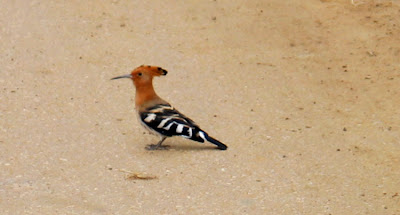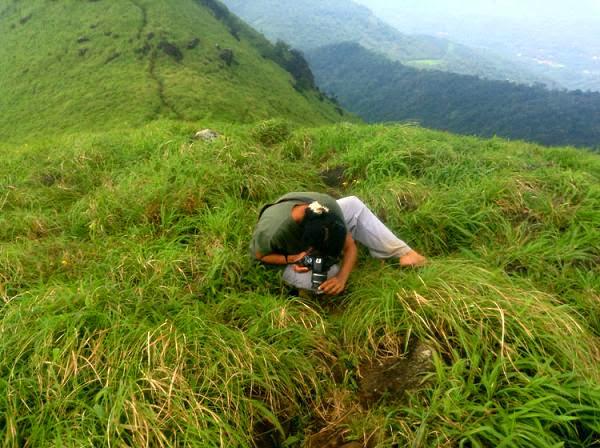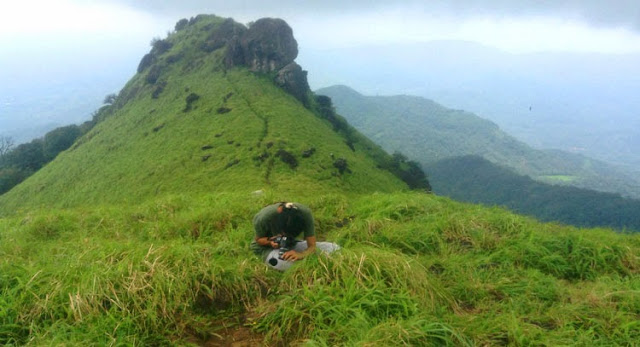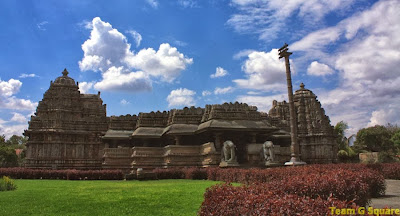We were completely dehydrated and hungry and to top it, time was running out and there was no mobile signal. If it got dark, if we don't find a way out, if nobody hears us when we shout for help!, many such weird thoughts crossed our minds. Our guides had also mentioned about the sightings of panthers and bears in and around after dark. My wife suggested we call the local police and inform them that we were trapped. I told her to relax for a while and think calmly of what could be done. After a few arguments between us, we decided to go back to that 12 feet rock and see if we could do something. No support, no ropes, only the pile of rock visible and very well knowing that it was the only way out for us now, we couldn't lose hope. Somehow, we don't know how, but we had to get to that pile.My wife took my support, climbed over me and got through. I, till today cannot believe I made it to the top, climbing that 12 ft rock. It was nothing less than a miracle for us. God was on our side. It was the best experience we had. Our clothes were torn, we were dehydrated and hungry, but having no time to think of all that we quickly followed the pile of rocks and moved further.
At times, the escape route between the rocks were so small, a heavily built person would surely get stuck in between. Now, it hit us why the men initially warned us about exploring the hill. But since we had made it, we could take the credit of going against their advice. The drama was not over yet. Though we missed a few piles in between, we were successful in finding the next that followed and by now gained the knack of moving ahead in the right direction. We were lost many times inside but we managed to get back on track. After all, our few years of experience in trekking and exploring had to favor us. It was around 4 pm and we were still following the pile of rocks. It seemed never ending. We knew we were in the right direction of descent as the temple down seemed to come closer by! A last step outward from the cave lead us to light. Yes, we were out of that scary rocky-terrain now. We had to surpass thorny shrubs and dense outgrowth to reach the temple. Looking back, we figured out the initial point of climb that the tiller had told us about. It would've been impossible for our to trace this point at the start of climb. And that too, with nobody helping us to the start point, the thought of starting from there never arised. We thanked god for being with us. We almost looked like rag-pickers at the end of the evening. An another adventure that was to follow was to find fuel for our bike!
Finally we found some food for all of us, including our bike. Thus, we ended our adventure turned misadventure, that taught us much which will be always helpful in all aspects of life and proving many old proverbs right. We also realised our potential and came to know we are no less than Jackie Chan ( a few of jumps across the rocks and crawls beneath the caves definitely matched his caliber).
According to the legend, while the Pandavas were in exile, Bhima had chosen this cave as his shelter where he fulfilled his daily chores. One day, it so happened that Bhima on realizing the difficulty of the villagers in removing weeds from their fields, approached them and promised to de-weed all their fields and in return got a cart full of paddy grains. The husk of these paddy grains can still be seen today at the cave. Unfortunately, we could not witness this place as it was encroached by innumerous bats.
Just while we were leaving, a local shop-keeper mentioned about another cave known as "Rokkada Gavi" or the 'cave of treasure' in the neighboring hill. So............
Finally we found some food for all of us, including our bike. Thus, we ended our adventure turned misadventure, that taught us much which will be always helpful in all aspects of life and proving many old proverbs right. We also realised our potential and came to know we are no less than Jackie Chan ( a few of jumps across the rocks and crawls beneath the caves definitely matched his caliber).
 |
| View of Tekal Hill |
Just while we were leaving, a local shop-keeper mentioned about another cave known as "Rokkada Gavi" or the 'cave of treasure' in the neighboring hill. So............









.jpg)
.jpg)
.jpg)















































